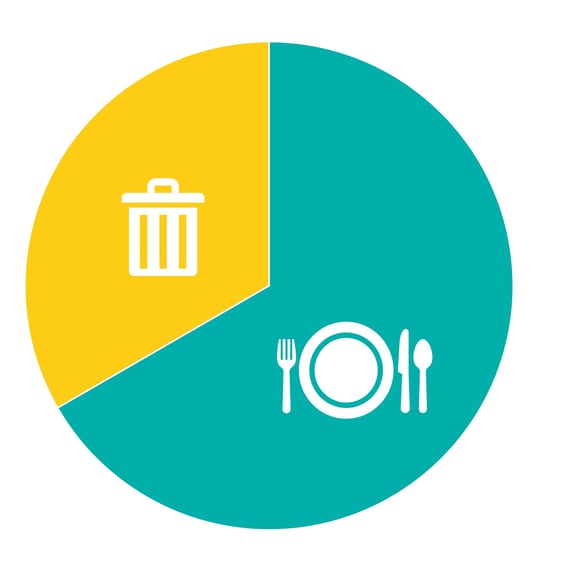6 stats that illustrate the crisis and opportunity of food waste in foodservice

Food waste is a global environmental, social and financial crisis. But it is also the rare win-win scenario for the foodservice industry, where the best thing to do for the planet is also the best thing to do for a kitchen's finances.
Here are six stats to help drive that point home:
THE CHALLENGE
26%
…of the world’s food loss and waste comes from the foodservice industry, according to the United Nations. One-third of the globe’s food production lost or wasted every year (estimated at 1-2 billion tons annually) at the same time millions of people go hungry. This costs the global economy $1 trillion per year and produces about 8% greenhouse gas emissions.
4-10%
…of a typical foodservice kitchen’s food purchases go to waste before they ever reach a diner’s plate, according ot Leanpath data. In other words, a kitchen with a $1 million annual food budget is wasting $40,000 to $100,000 without ever reaching a diner. Add to this the lost labor hours spent producing that food – as well as haulage fees for waste food – and the cost of food waste represents a massive inefficiency for businesses with notoriously thin margins.
50%
… of a foodservice kitchen’s food waste comes from overproduction. While there are many contributors to food waste – trim, inventory management, expiration, equipment malfunction and more – the largest driver is overproduction.
THE OPPORTUNITY
4-8%
… increase in a kitchen’s profitability from labor savings from cutting overproduction in half. Overproduction accounts for the largest amount of a kitchen’s food waste, and it contributes to the largest loss of labor hours due to food waste. We crunched the numbers, and when you cut overproduction in half – a very attainable goal – the savings accrue quickly.
2-6%
…of food purchase costs saved by cutting overall food waste in half at Leanpath client sites. When you stop producing food you know is only going to waste, you can stop purchasing that food and recoup costs that were once simply going in the bin.
61%
… of consumers expect food companies to do more to reduce food waste, according to research firm CapGemini. The good news is Leanpath offers a proven solution for foodservice kitchen’s to cut their food waste in half, help people, the planet and their own finances AND satisfy consumer demand for greater sustainability. Contact us today.
Sign up for our monthly newsletter for the latest in
food waste prevention initiatives, best practices, webinars and more.